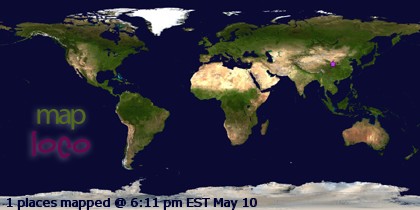Hooded penitents march in a Semana Santa processions outside the cathedral in Jerez de la Frontera
After experiencing it last year in Palencia, I thought I
knew from Semana Santa. Castilla y Leon (the Spanish state that contains Palencia) is known as an area with
amazing Easter festivities. It's true: the processions, in which enormous
pasos (statues of bible scenes, sometimes hundreds of years old) roll through town, followed by penitants in eerie hooded
costumes and accompanied by complete silence, are affecting and impressive. People come from all
over to see Easter in Salamanca, Burgos, and Leon, and I understand why.
Something powerful and unique is at play there.When I moved south, people kept telling me: “Semana Santa in
Andalucia is different.” They insisted it was both more passionate and less
serious, which was a hard combination for me to imagine. In the end, though, that
is exactly what I found.
The biggest difference is immediately
obvious in any Andaluz Semana Santa parade: the costaleros. Andaluz pasos are similar to their northern brethren in that they are enormous platforms topped with statues, although these tend to be images of
saints and Jesus’ last days and beautiful renderings of Mary (well,
Maria) on top. Instead of being rolled by the penitents, they are carried by teams of “costaleros” (the ones who carry),
between 15 and 40 people depending on the size and weight of their burden. For the weeks leading up to Easter, the costaleros practiced
in my neighborhood, training like marathon runners--and it’s a good thing, too, the
pasos can weigh more than 1000 kilos.
I would come
upon them suddenly, rounding a corner to find them moving slowly, almost silently, along the street. The clues to their presence were the soft thud-thud of
their sneakers moving in under an enormous but as yet empty platform, a
borrowed police light on top warning drivers to stay away, the ding of a
triangle keeping rhythm. A week before Semana Santa, they added weight, building the metal skeletons of their saints on top to simulate the distribution of weight. Later, though, in the
processions themselves, the costaleros were almost invisible behind a curtain of
cloth, only their sneakers visible, always moving in unison. They'd move a
hundred meters, then stop to rest and put the paso down. Then, with grunts and
yells from hidden places, they'd jump up, suddenly, landing dramatically with knees
bent and the paso on their backs again.
In the course
of a few days, I saw processions in Jerez de la Frontera, Cadiz, and here in
Linares, and it’s true that by and large the
atmosphere was light, funny, social. People chatted with neighbors, penitants
texted on their phones as they marched, mobile stands sold snacks and plastic
trumpets for the young ones-- all behavior that would never be permitted up north. It felt like a big street party, crowds of people dressed up in their
best dresses and slacks, bows in the kids’ hair, gossip and salty snacks on
everyone’s lips. There was never a moment of silence, even as the costaleros shuffled by.... but it all stopped for the
saetas. These long, intense, deeply-felt and often improvised flamenco songs are sung for
the saints as they are paraded through the streets, and they are unique to southern Spain. I heard three saetas during Andaluz semana santa, and each
time I was struck by their vocal acrobatics, pure emotion, and the silence and stillness that would sweep over the scene for just a moment.
That’s where the passion comes in, I think—no, Easter may not be a
silent, serious time here in the south, but people certainly feel very intensely about it. Some hate it ("A bunch of hypocrites, they don’t go to church the rest
of the year," one friend commented to me); others look forward to it all year with mounting excitement. The
costaleros go through enormous pain and suffering in the name of the holiday
and their savior. The saeta singers pour their hearts out in front of
crowds who turn out from all over town and at all hours (more on that next entry.)
And when it rains and the pasos can’t go out (most are considered priceless works of art due to their age and provenance), the people hold each other
and cry—real tears.
It was a rainy Semana Santa all over Spain, especially in
Andalucia, and ESPECIALLY in Linares (I read in an article today that up to 4
times the normal amount of rain fell in March. In some places up to 6 times!)
so there was a lot of crying this year. But one particular, particularly impressive
procession took place at 4 am on Thursday night, and I was there to witness it.
Stay tuned for my next blog entry to read all about it.
A late-night procession, bringing a paso home to its church in Jerez de la Frontera


